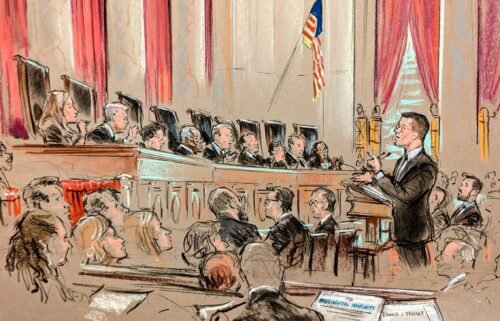Virginia voters hold fate of ERA in their hands

The Equal Rights Amendment isn’t explicitly on Tuesday’s ballot in Virginia, but it might as well be.
Once again, the state’s voters hold the equal future of girls and women everywhere in their hands. Understanding that, Virginia ERA activists are receiving intense get-out-the vote support from people around the country and beyond.
On November 5, Virginians will vote and, according to polls, have a very good chance of electing many pro-ERA legislators.
Those legislators are expected to bring the ERA vote to the floor in January 2020 — and this time, ratify it. This would supply the final, 38th state needed to ratify the amendment, passed by Congress in 1972. Earlier this year in Virginia, the measure lost — by one vote.
What would the ERA do? It would amend the US Constitution to include simply this: “Equality of rights under the law shall not be denied or abridged by the United States or by any State on account of sex.”
Deliberately left out of the Constitution when it was written, women have paid the price in opportunities, rights and protections ever since.
At a recent conference on the future of the ERA at the University of Richmond Law School, I was asked what it was that brought me to the work of helping to ratify the ERA. I told the story of my feminist grandfather, a black, Lowndes County, Alabama, farmer with 15 children — nine girls and six boys. In the 1930’s and 40’s, he determined to send all nine girls to college. The boys stayed to help him run the farm.
His decision to educate his daughters had a profound effect on the next four generations of our family, and counting. My 40 cousins and I all went to college and on to productive lives, as did our children, delivering a small army of doctors, lawyers, writers, corporate leaders, entrepreneurs and a judge. A pretty good output for a tiny Alabama farm in one of the poorest counties in the country — then and now.
I want a similarly fair and just future for every person in America.
I’m not sure that Billy Gardner of Lowndes County had any idea that Alice Paul, the feminist activist who succeeded in her effort to give women the vote in 1920, also wanted, in 1923, to amend the Constitution to include women. But he understood clearly that his daughters deserved equal footing in the world. They are both heroes to me.
And that’s what the ERA is about.
It has taken us almost 100 years to get this close to an Equal Rights Amendment. There are still hurdles to overcome, for sure, including bills in both the House and Senate now to remove the seven-year deadline Congress wrote into the amendment’s preamble when the resolution for the ERA was proposed in 1972: it held that amendment would become effective if “within seven years” it were approved by three-quarters of state legislatures — that is, 38 states.
We consider this the final barrier to full implementation of the ERA.
But getting to that 38th state is huge. We’re pulling for you, Virginia.




